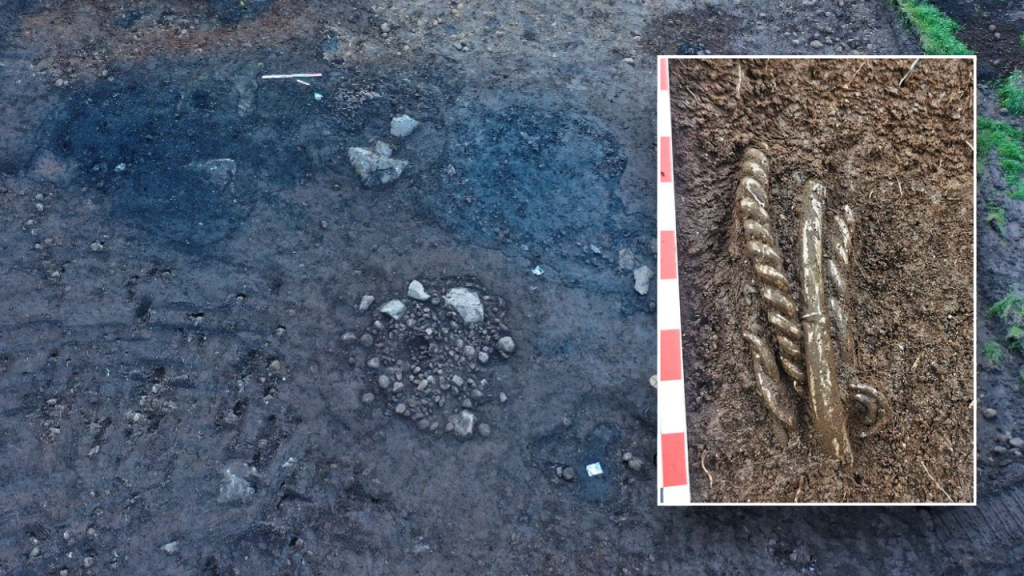Archaeologists recently discovered a valuable treasure buried by Vikings over 1,000 years ago in Årdal, Hjelmeland, Western Norway. The excavation was conducted on the property of a local farmer who planned to build a road. The treasure, consisting of four silver arm rings with unique embellishments, was found around 7 inches deep in the soil under what would have been a small house. Experts believe the treasure was intentionally buried, and alongside the arm rings, excavators found soapstone pots, rivets, knife blades, and more, providing evidence of a large and powerful Viking farm on the land.
The discovery was announced by the University of Stavanger’s Museum of Archaeology in a press release. Field archaeologist Ola Tengesdal Lygre expressed his initial surprise at the discovery, noting that the silver arm rings were mistaken for copper wires at first. Project manager Volker Demuth described the findings as unique due to the rarity of finding such valuable objects exactly where they were laid. The discovery of the treasure intact in its original context provides new insights into life and society during the Viking era. Demuth speculated that the treasure may have been hidden by residents of the farm during an attack, before fleeing to the mountains.
Experts see the discovery as one of the biggest in recent memory, with Museum director Ole Madsen calling it “absolutely fantastic.” The relics, once researchers have taken soil samples and x-rays of the artifacts, will be exhibited for the public to view. Madsen expressed excitement over the unique knowledge that the discovery provides about the Viking era, one of the most important eras in Norwegian history. The artifacts will offer a glimpse into the daily life and societal structure of Vikings living on the farm, shedding light on their customs, traditions, and responses to potential threats such as attacks.
The press release also highlighted the significance of the treasure in relation to a broader understanding of Viking culture. The artifacts provide a tangible connection to the past, offering a glimpse into the material culture of the era. The silver arm rings, in particular, are noted for their intricate designs and craftsmanship, reflecting the wealth and power of the farm’s inhabitants. The discovery underscores the importance of preserving archaeological sites and conducting careful excavations to uncover the hidden histories of the past. By studying these artifacts, researchers can piece together a more nuanced understanding of Viking society and its interactions with neighboring communities.
The excavation site in Årdal, Hjelmeland, is now being carefully studied and documented to ensure that valuable information about the Viking farm and its inhabitants is preserved. The findings will be analyzed by experts in the field of archaeology to gain further insights into the context and significance of the treasure. By employing advanced imaging techniques and conducting thorough research, researchers hope to unlock new knowledge about the Viking era and its lasting impact on Norwegian history. The discovery serves as a reminder of the richness of archaeological heritage and the importance of continued exploration and investigation into the past to uncover hidden treasures and secrets.


